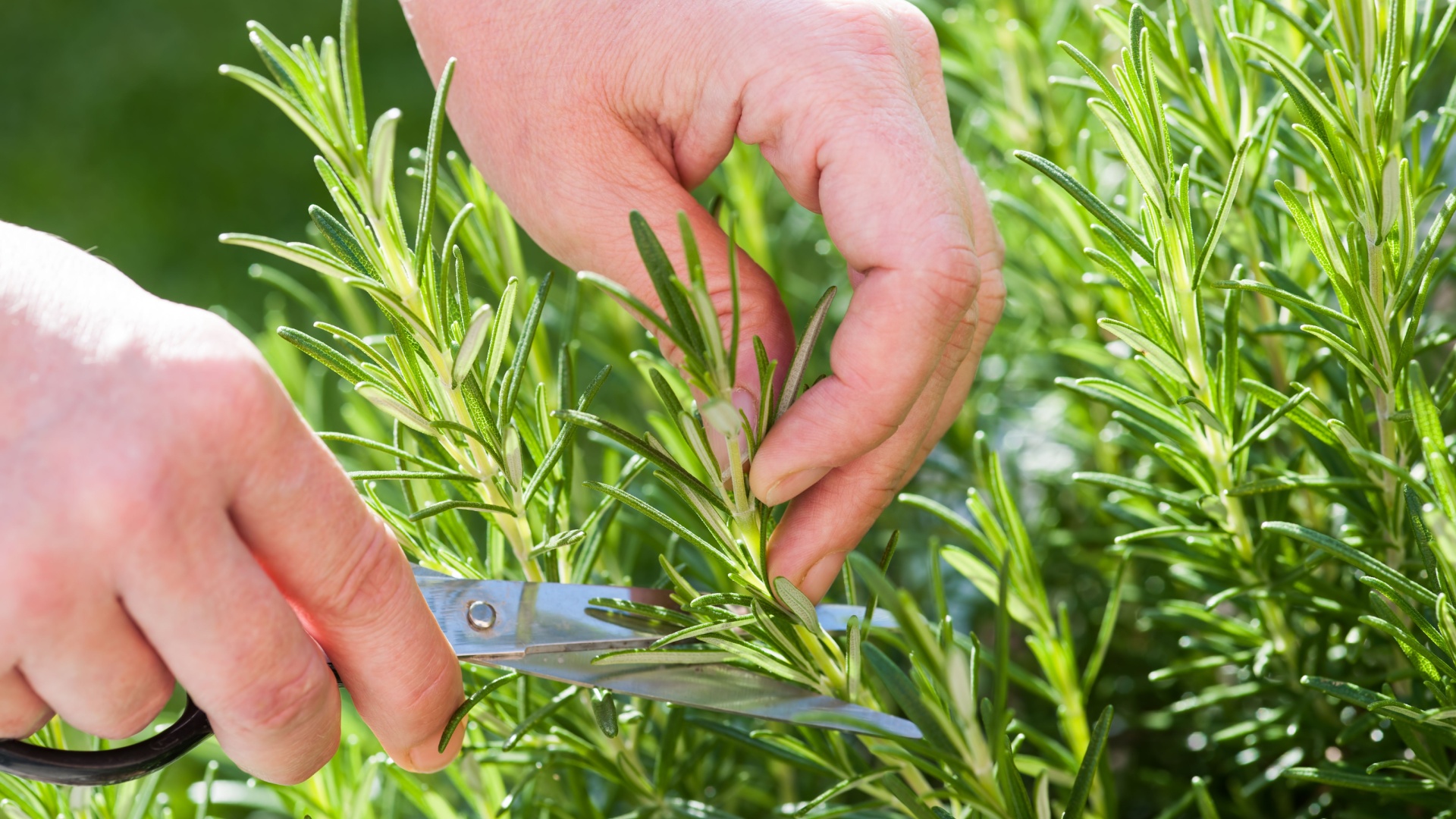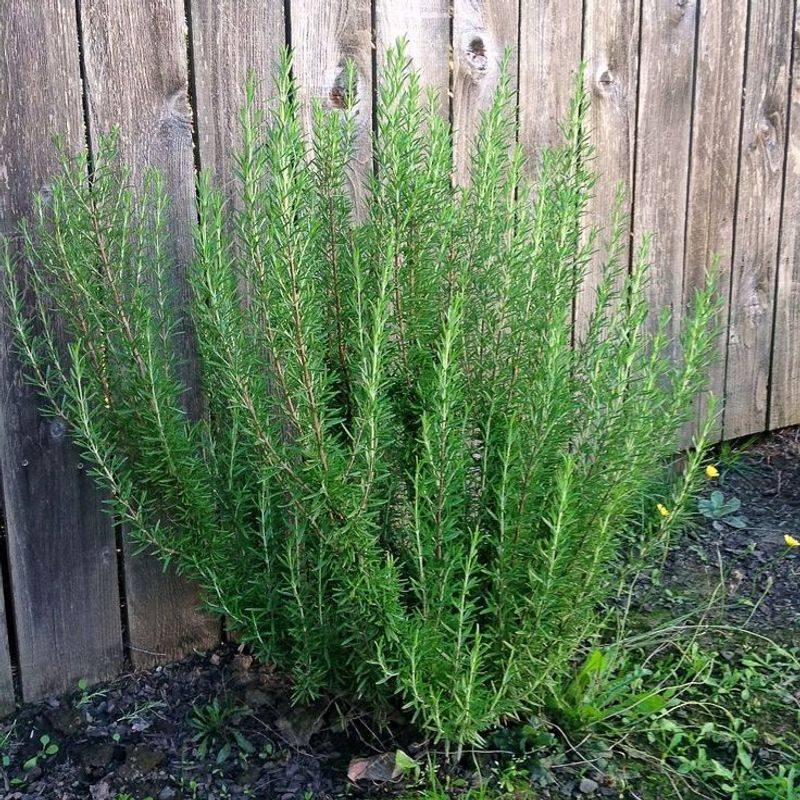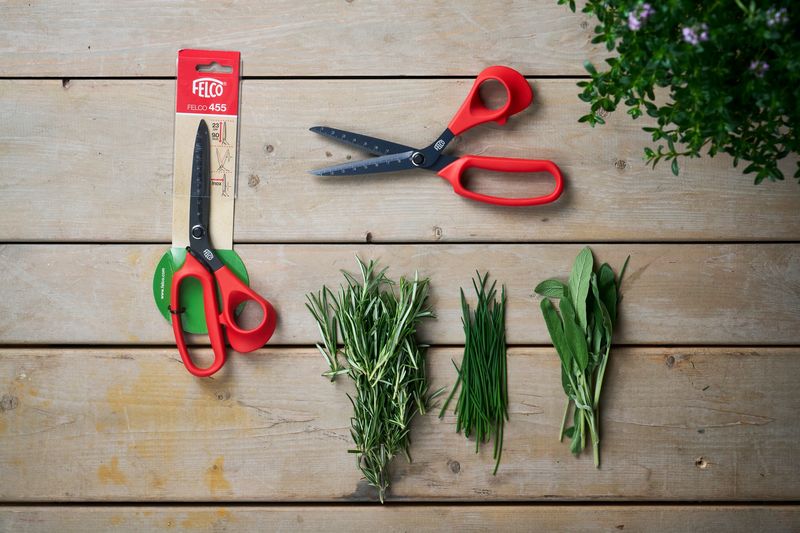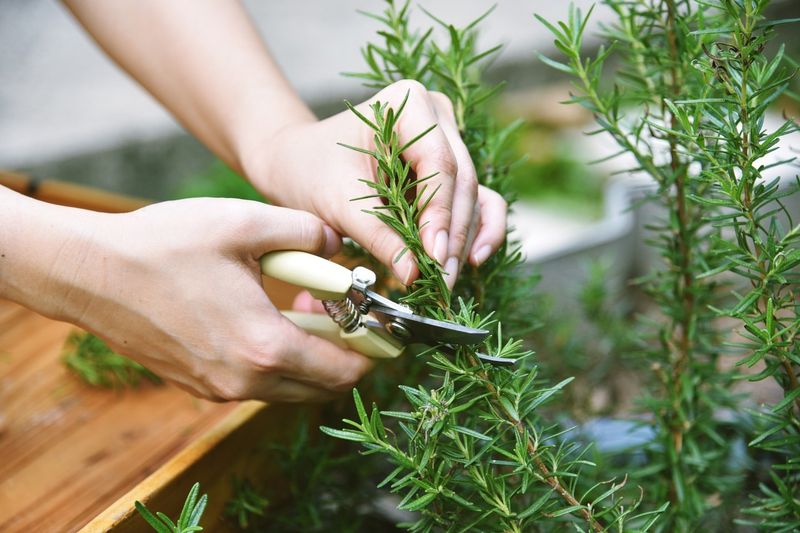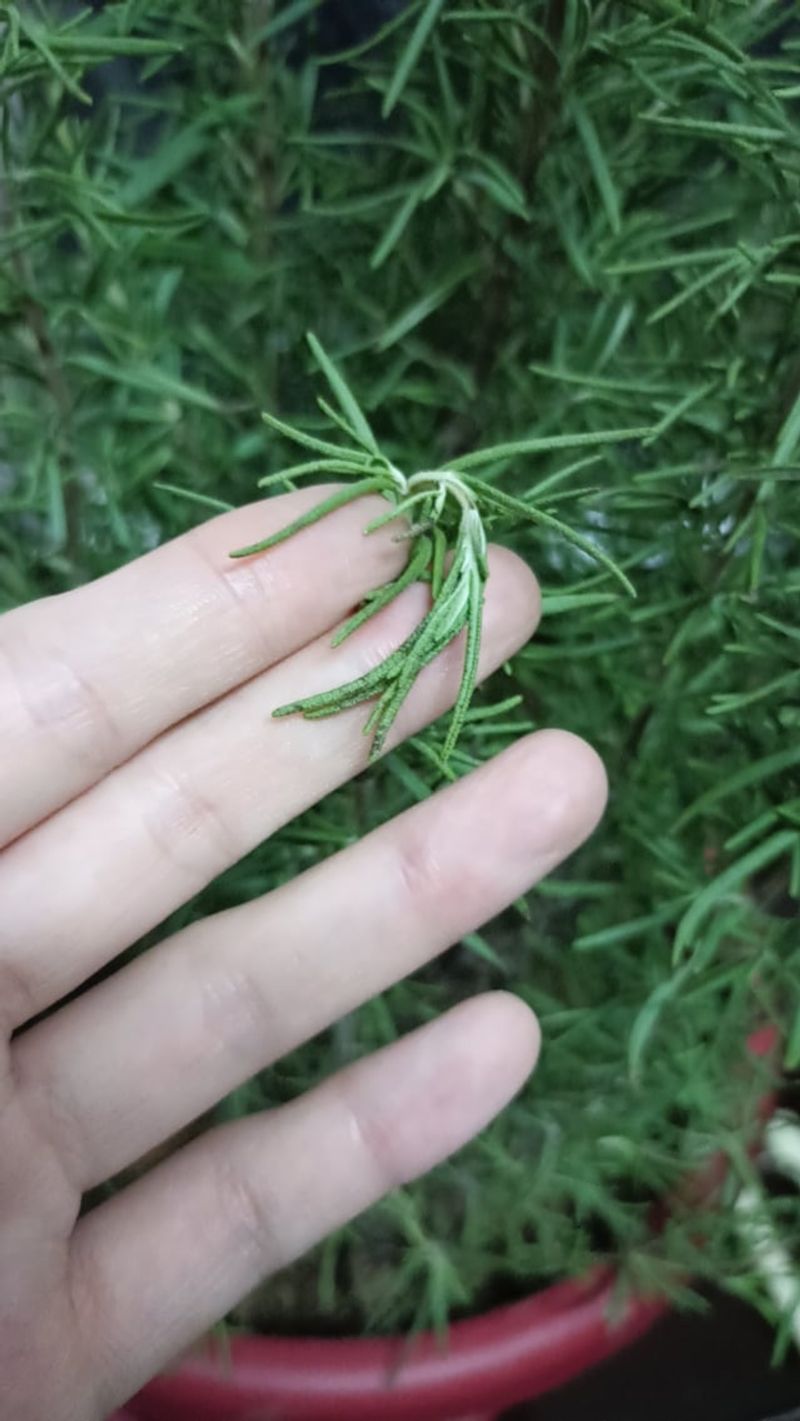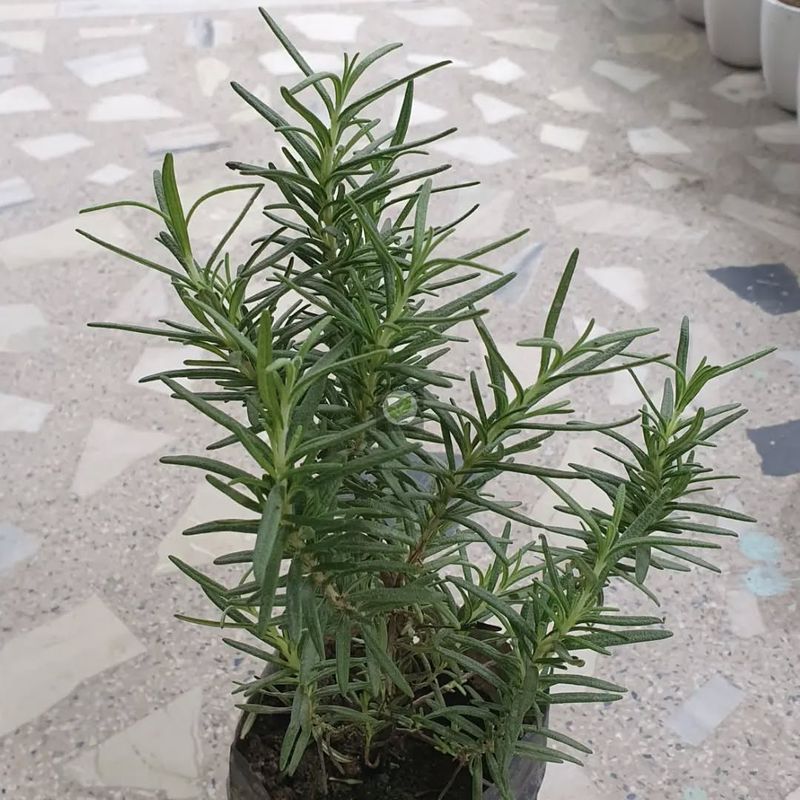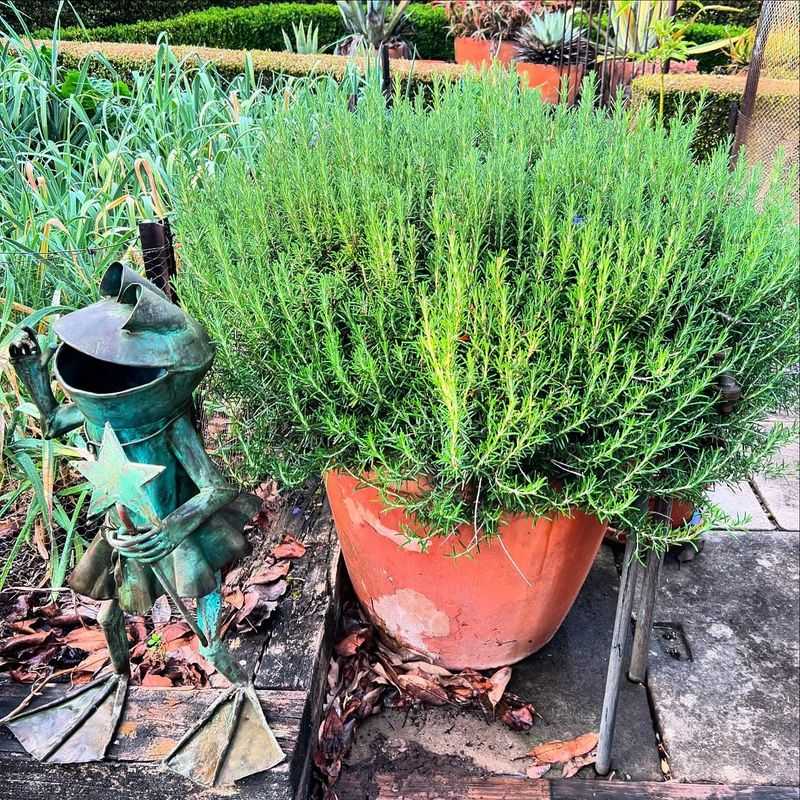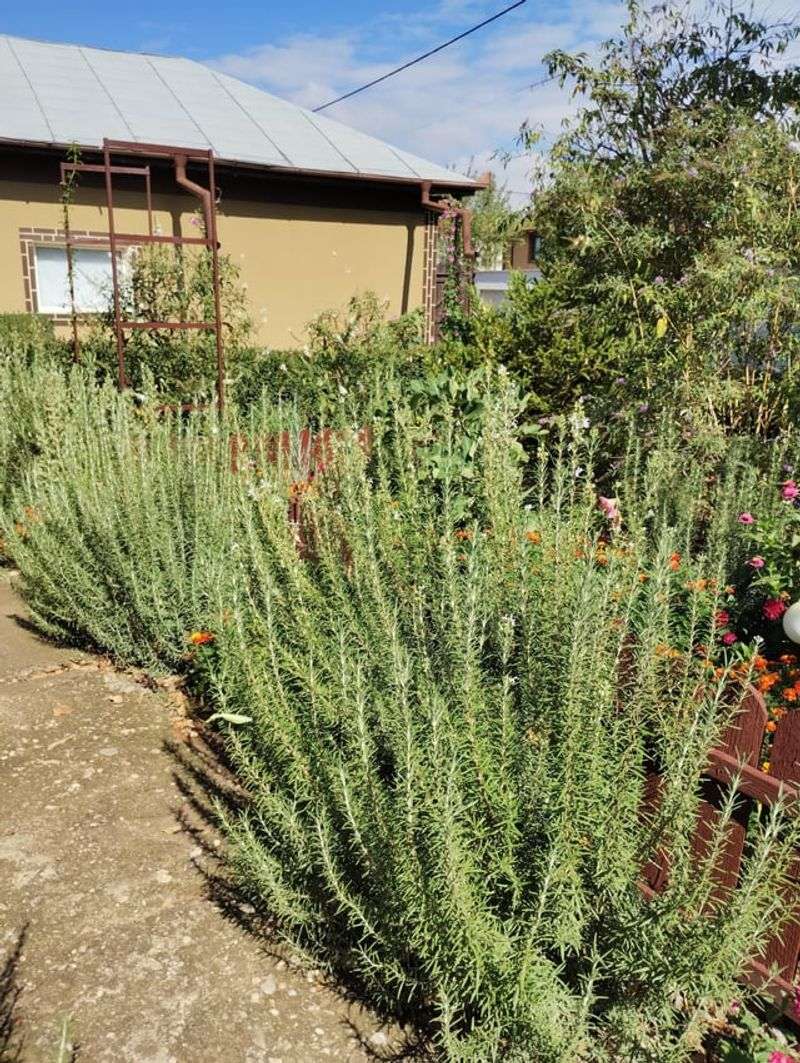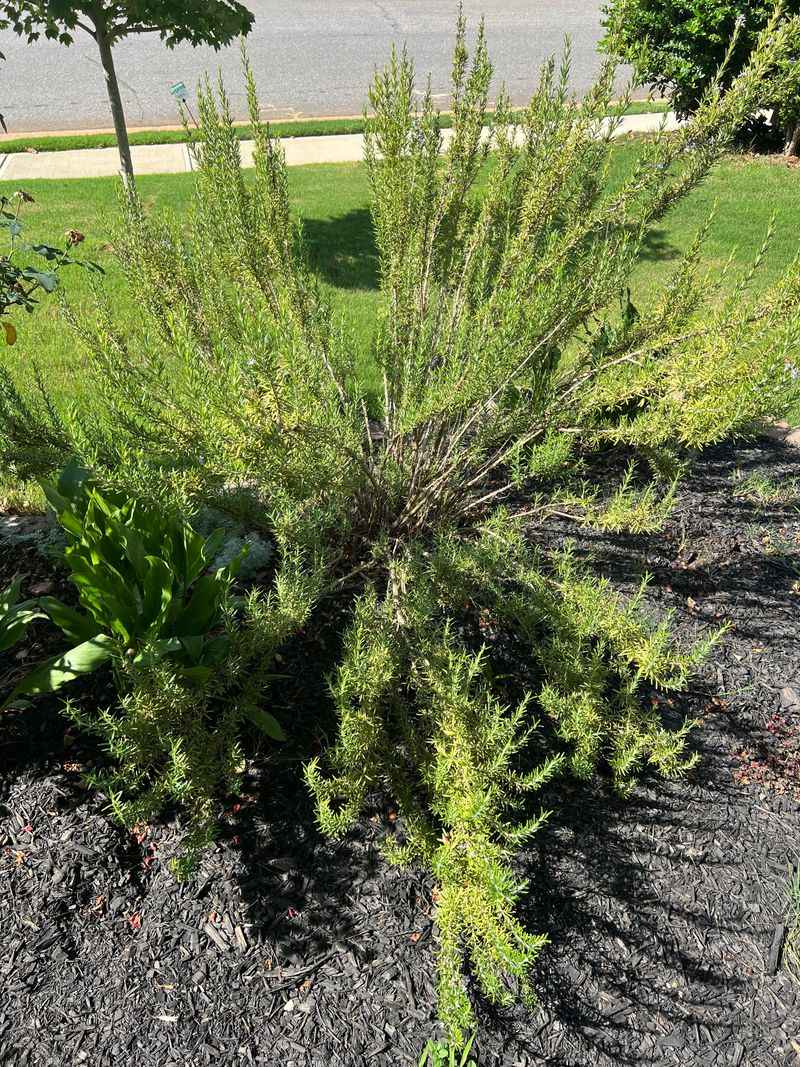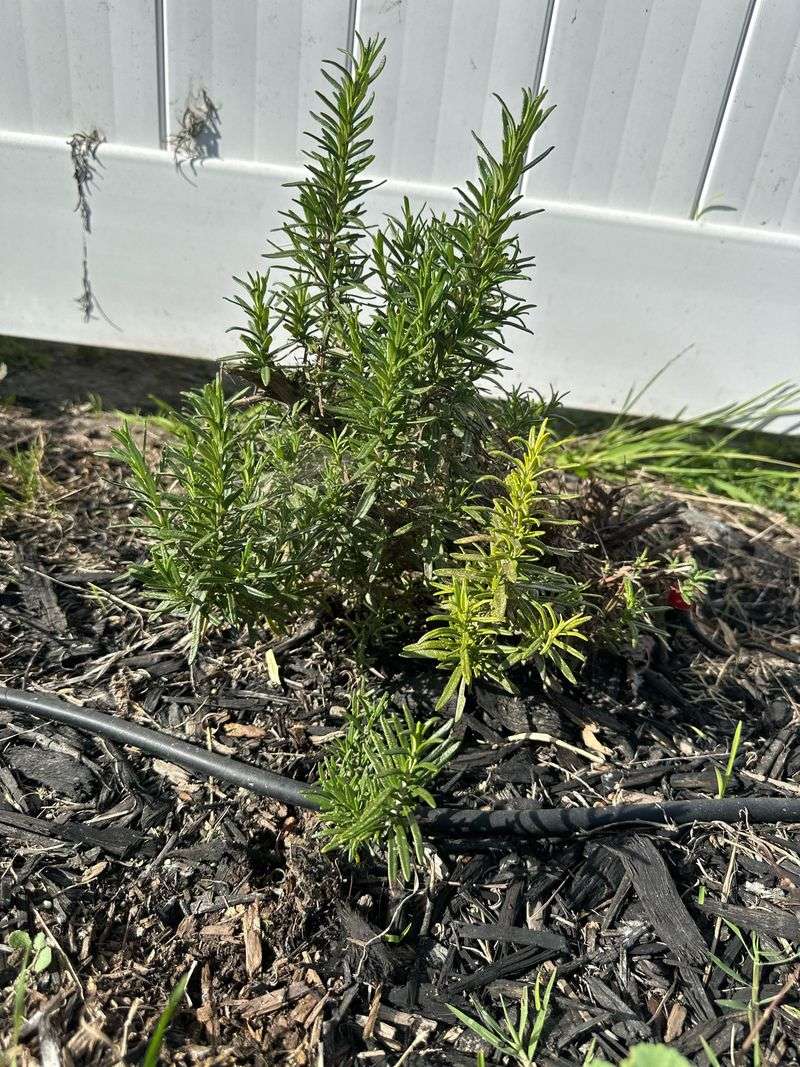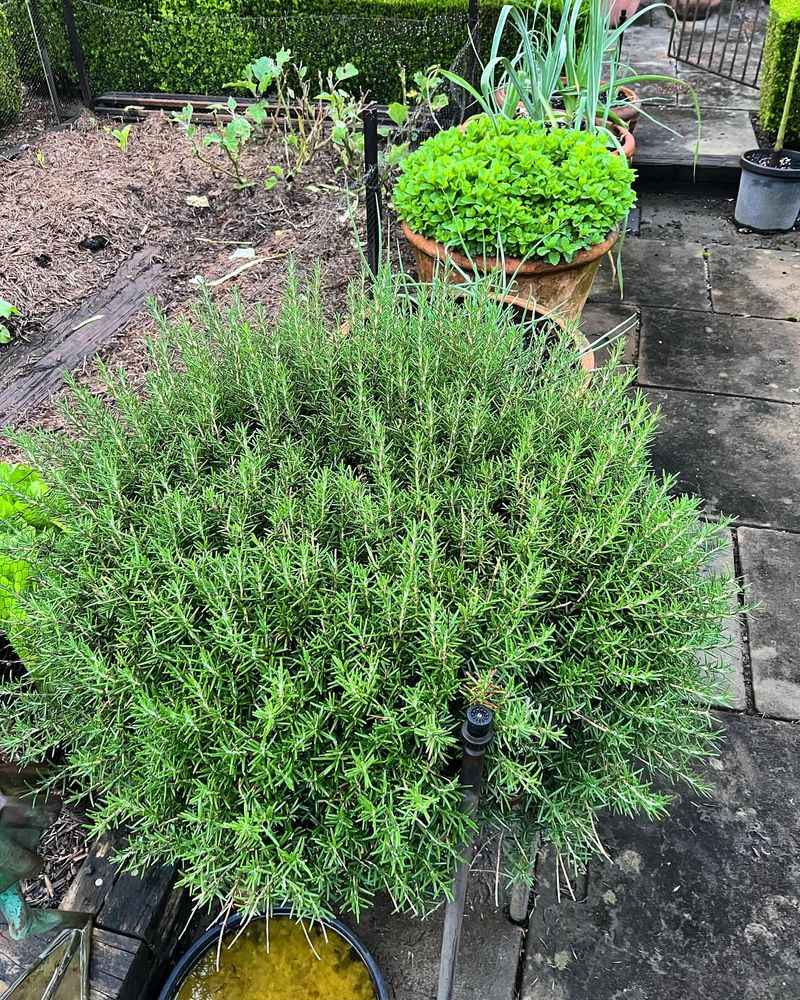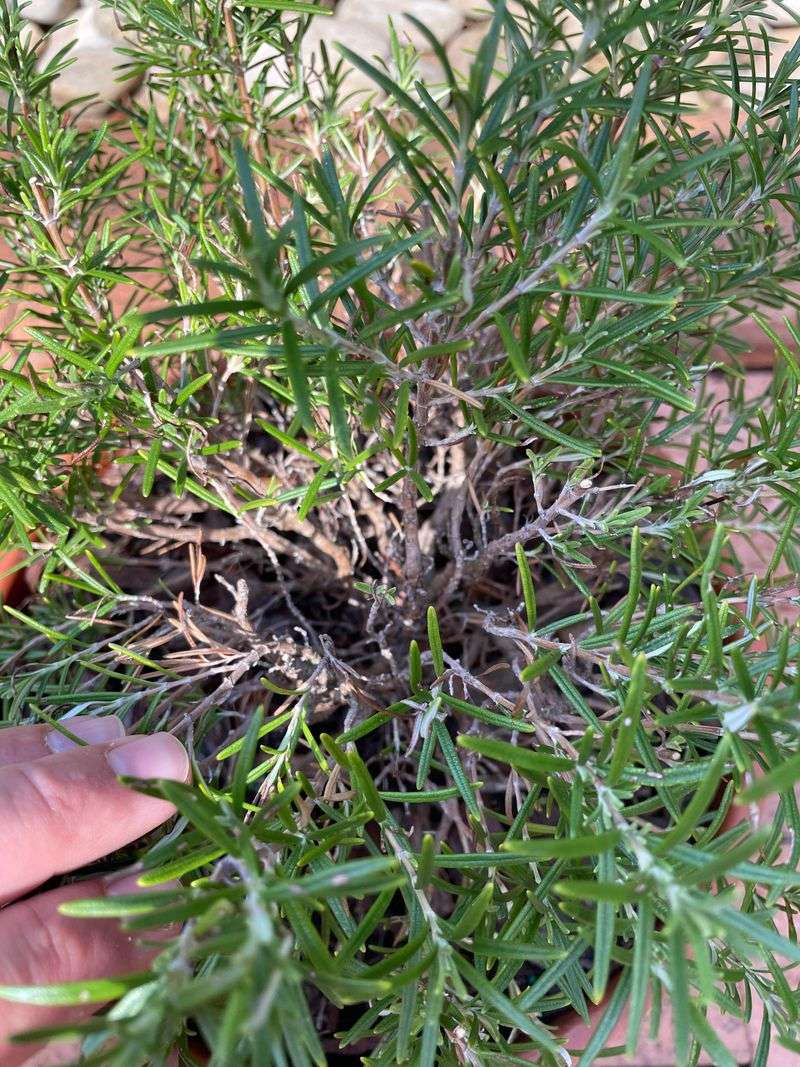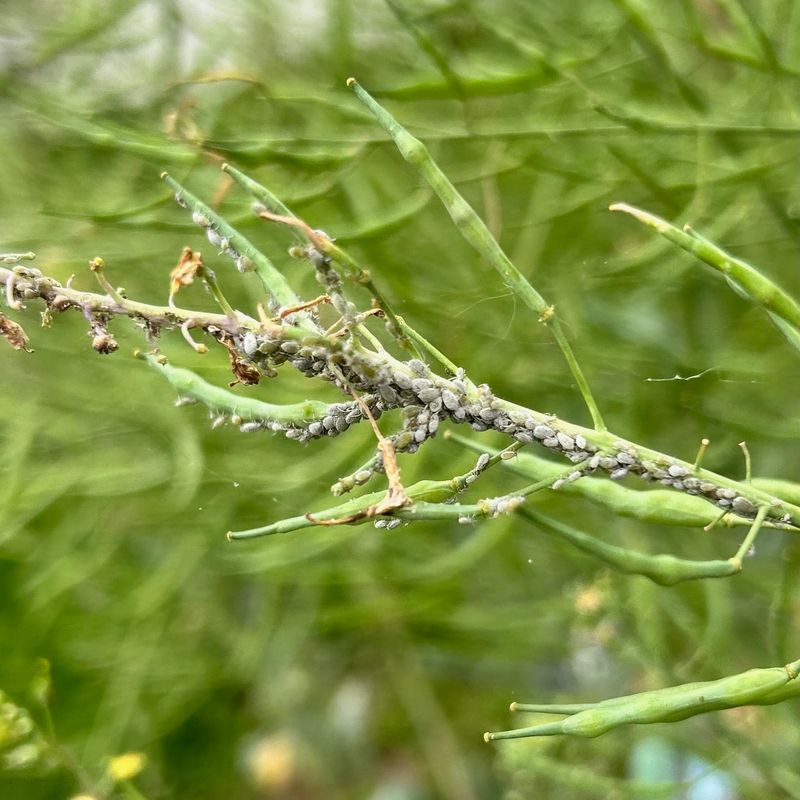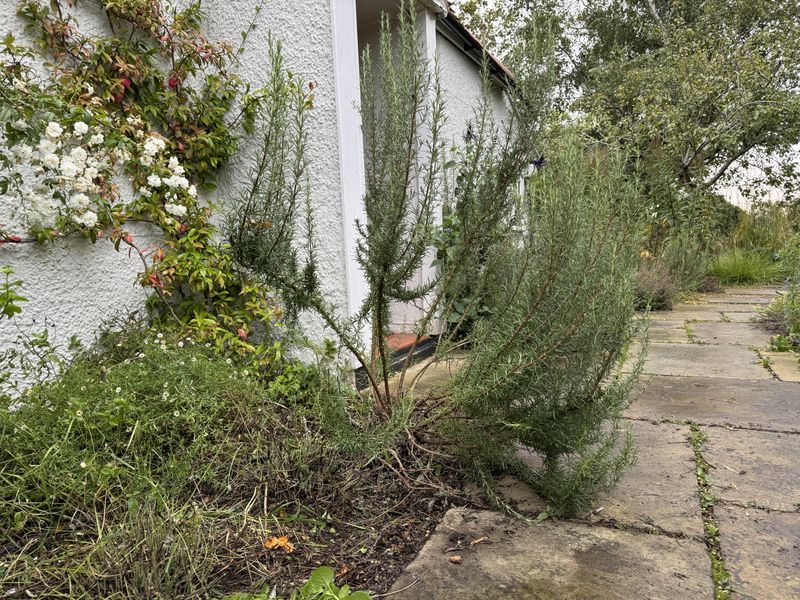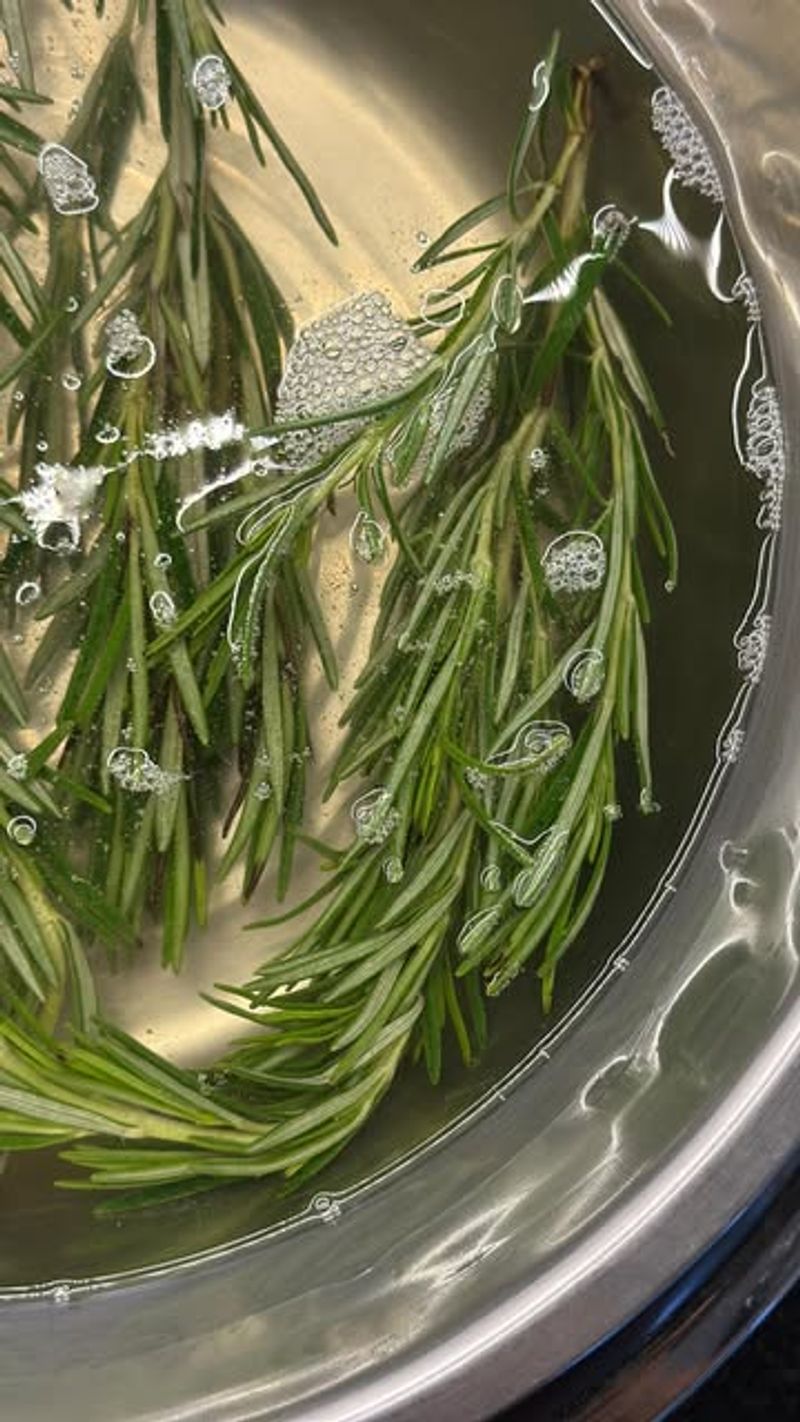Snip rosemary the wrong way, and you’ll stunt it faster than you can say “dried out.” But with a few clever moves, you’ll keep those fragrant stems growing strong, season after season.
If you want lush, bushy rosemary that gives and gives—start with these smart tips.
1. Wait For The Right Moment
Timing is everything when it comes to rosemary. The best time to harvest is in the morning after the dew has dried but before the day gets too hot. This is when the essential oils are most concentrated, giving you the most flavorful cuttings.
Your plant should be at least 6 inches tall before you start harvesting. Young plants need time to establish strong roots before being pruned.
2. Use Sharp, Clean Tools
Dull scissors or pruners crush stems instead of making clean cuts, which can damage your plant. Always use sharp, clean scissors or pruning shears when harvesting rosemary.
Wiping your tools with rubbing alcohol before cutting prevents spreading diseases between plants. This simple step protects your rosemary’s health and ensures it continues growing strong after harvest.
3. Never Harvest More Than One-Third
Greedy harvesting can stress your rosemary plant. The golden rule is to never take more than one-third of the plant at any time. Removing too much foliage prevents the plant from photosynthesizing properly.
Leave plenty of growth on the plant so it can recover quickly. Your patience will be rewarded with a healthier plant that produces more herbs in the long run.
4. Cut Just Above Leaf Nodes
Look for tiny bumps on the stems where leaves grow – these are leaf nodes. Cutting just above these nodes stimulates the plant to branch out in two directions from that point, creating a bushier plant.
Avoid cutting into woody stems that don’t have visible green growth. The plant may struggle to recover from cuts on these older sections, so focus on the greener, newer growth for best results.
5. Focus On Longer Stems First
Target the longer, lankier stems when harvesting rosemary. These stems are perfect candidates for trimming because removing them helps maintain the plant’s shape and encourages fuller growth.
By selecting these longer stems, you’re essentially performing a light pruning that benefits the plant. The rosemary will respond by putting energy into developing side shoots rather than just growing taller.
6. Harvest From Multiple Spots
Spread your harvesting around the plant rather than taking all cuttings from one area. This balanced approach prevents bald spots and maintains the plant’s overall shape.
Moving around the plant while harvesting ensures even growth in all directions. Think of it as giving your rosemary a light, all-over trim rather than a dramatic haircut in just one section.
7. Harvest Before Flowering For Best Flavor
The essential oils in rosemary reach their peak concentration just before the plant flowers. During this time, the leaves contain more of the compounds that give rosemary its distinctive taste and aroma.
While flowering rosemary is still usable, the flavor becomes slightly more bitter after blooming begins. For culinary purposes, timing your harvest before those pretty blue flowers appear will give you the most flavorful results.
8. Regular Light Harvesting Is Better Than Occasional Heavy Cutting
Frequent, gentle harvesting stimulates continuous new growth. Taking small amounts every few weeks during the growing season is much healthier for the plant than removing large quantities all at once.
This approach mimics natural grazing patterns that plants have evolved to handle. Your rosemary will respond with vigorous growth, and you’ll enjoy a steady supply of fresh herbs rather than feast-or-famine harvests.
9. Avoid Harvesting Stressed Plants
A plant struggling with drought, disease, or pest problems needs all its energy for recovery. Signs of stress include yellowing leaves, wilting, or visible pests.
Hold off on harvesting until your rosemary returns to full health. Providing proper care—adequate water, sunlight, and possibly organic pest control—will help your plant bounce back faster and be ready for future harvests.
10. Harvest More In Spring And Summer
Rosemary grows most vigorously during warm seasons, making spring and summer ideal for heavier harvesting. The plant can easily recover during these peak growing months when sunlight is abundant.
Scale back your harvesting as fall approaches. In winter, especially in colder climates, the plant’s growth slows dramatically, so it’s best to minimize or completely avoid harvesting during this dormant period.
11. Combine Harvesting With Shaping
Smart harvesting doubles as plant maintenance. As you select stems to cut, consider how each cut will affect the plant’s overall shape. Remove stems that stick out awkwardly or grow in unwanted directions.
This strategic approach gives you fresh herbs while simultaneously training your rosemary into a more attractive, balanced form. Over time, you’ll develop a beautiful, well-shaped plant that continues to provide bountiful harvests.
12. Leave The Woody Base Untouched
The woody base of rosemary contains the plant’s energy reserves and supports its structure. These older stems have fewer leaves but are crucial for the plant’s survival and regrowth.
Focus your harvesting on the green, flexible stems growing from this woody framework. The woody parts rarely sprout new growth when cut, while the younger stems readily produce new leaves and branches after harvesting.
13. Prune Out Any Dead Or Diseased Parts
While harvesting, remove any brown, black, or yellowing stems and leaves. These unhealthy parts drain energy from the plant and can spread disease to healthy sections.
Make clean cuts where the damaged growth meets healthy tissue. Disposing of these trimmings away from your garden prevents potential disease spread. This maintenance pruning during harvest keeps your rosemary in top condition.
14. Give Older Plants A Rejuvenation Pruning
Mature rosemary plants (3+ years old) benefit from more dramatic pruning once annually. Early spring is perfect for cutting back up to half the plant’s size, focusing on older stems.
This seemingly harsh treatment actually reinvigorates aging plants by forcing fresh growth. The new stems that emerge will be more productive and flavorful than the older growth, essentially giving your rosemary a second youth.
15. Process Your Harvest Immediately
Fresh-cut rosemary begins losing moisture and essential oils right away. Process your harvest immediately after cutting for best flavor and storage quality.
Rinse the stems gently under cool water to remove any dust or insects. Pat dry with paper towels before using fresh or preparing for drying or freezing. Quick processing preserves the aromatic compounds that make rosemary so special.

